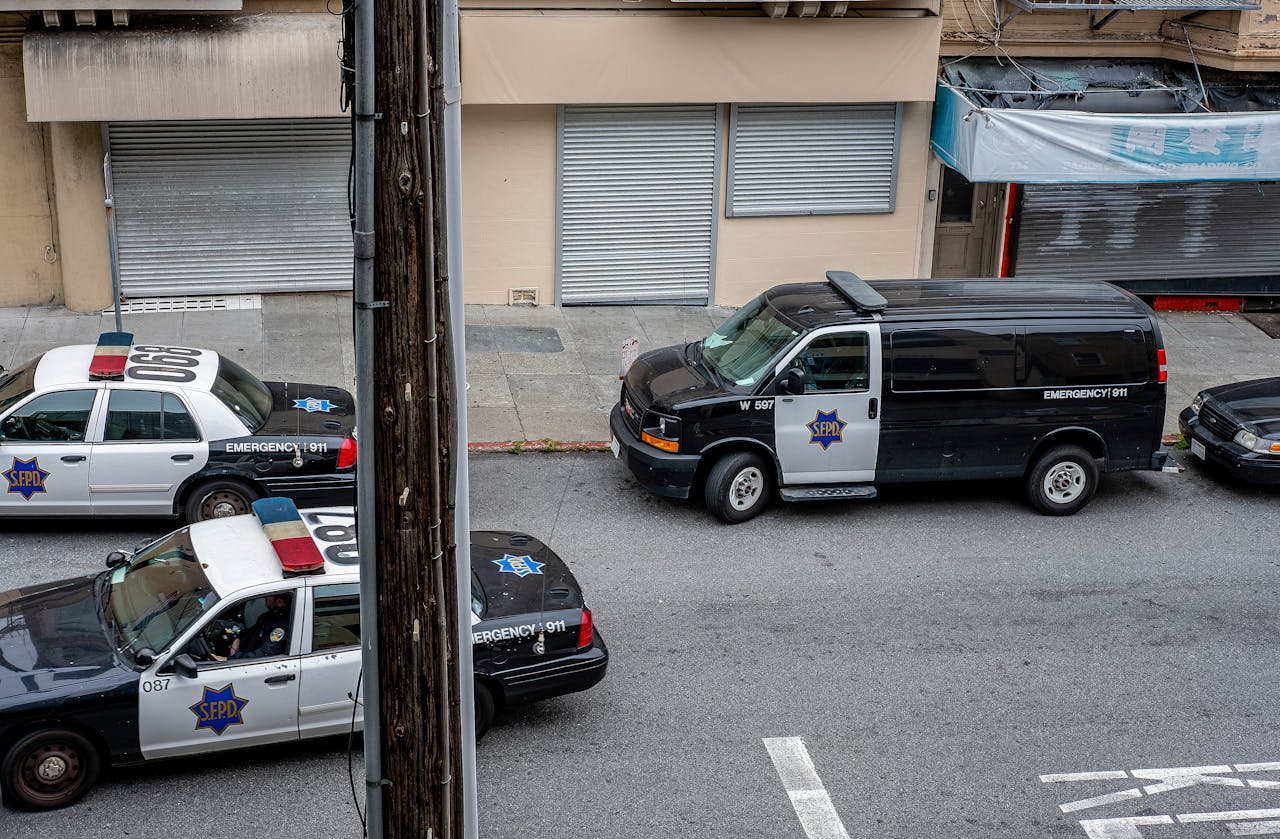In law enforcement, visibility and authority are crucial elements of an officer’s role. Police officers are not only enforcers of the law but also symbols of safety and order within the community. One of the most recognizable symbols of law enforcement is the police patch. Worn prominently on uniforms, police patches serve as a powerful visual cue that signifies authority, professionalism, and a commitment to public safety.
This comprehensive article explores the role of police patches in reinforcing authority and public safety. We will delve into the history and significance of police patches, their design elements, and the ways they contribute to the effectiveness of law enforcement. By understanding the impact of police patches, law enforcement agencies can ensure that these symbols continue to play a vital role in maintaining public trust and confidence.
The History and Evolution of Police Patches
To fully appreciate the significance of police patches, it is essential to understand their origins and how they have evolved over time. Police patches have a long history, with their design and use changing to meet the needs of modern law enforcement.
1. Early Origins of Police Patches
The use of patches and insignia in law enforcement can be traced back to the early days of organized policing in the 19th century. In the United States, as cities grew and the need for formal law enforcement increased, police departments began to adopt standardized uniforms. These uniforms often included patches or badges that identified officers and their affiliations with specific departments.
2. The Evolution of Patch Design
Over the years, the design of police patches has evolved to reflect the changing nature of law enforcement. Early patches were simple in design, often featuring the name of the police department and a basic emblem. As law enforcement agencies became more established, patches began to incorporate more intricate designs, including symbols of authority, state or national emblems, and other elements that conveyed the identity and mission of the department.
3. The Role of Patches in Modern Policing
Today, police patches are an integral part of law enforcement uniforms worldwide. They serve as a symbol of authority, a means of identification, and a tool for fostering public trust. The design of police patches has become increasingly sophisticated, with many departments opting for custom designs that reflect their unique history, values, and commitment to public safety.
The Significance of Police Patches in Law Enforcement
Police patches play a multifaceted role in law enforcement, serving as more than just decorative elements on a uniform. They are symbols of authority, professionalism, and the commitment to protecting the public. Below, we explore the various ways in which police patches reinforce authority and public safety.
1. Establishing Authority and Command Presence
One of the primary functions of police patches is to establish authority and command presence. When a police officer wears a uniform adorned with official patches, it sends a clear message to the public that the officer has the authority to enforce the law. This visual representation of authority is crucial in maintaining order and ensuring compliance with the law.
Practical Example:
A police officer on patrol is easily identifiable by the police patch on their uniform, which features the department’s emblem and the word “POLICE” in bold letters. This visible symbol of authority helps the officer establish a commanding presence in public spaces, deterring potential criminal activity and reassuring citizens of their safety.
2. Enhancing Officer Visibility
Police patches play a key role in enhancing the visibility of law enforcement officers. In situations where quick identification is necessary, such as during emergencies or large public events, the patches help the public and other officers quickly recognize law enforcement personnel. This visibility is essential for effective policing and ensuring that officers can be easily identified in the field.
Practical Example:
During a crowded public event, officers wear uniforms with brightly colored police patches that stand out against their dark clothing. The patches feature reflective elements that make them visible even in low-light conditions. This enhanced visibility ensures that officers can be quickly identified by event attendees and other first responders.
3. Building Public Trust and Confidence
Public trust and confidence in law enforcement are essential for effective policing. Police patches contribute to building this trust by serving as a visible reminder of the officer’s duty to protect and serve the community. When members of the public see an officer wearing a police patch, it reinforces the idea that the officer is a legitimate authority figure committed to upholding the law and ensuring public safety.
Practical Example:
A community-oriented police department designs a custom patch featuring symbols of the local community, such as landmarks or cultural icons. The patch serves as a visual representation of the department’s commitment to the community it serves, fostering trust and building positive relationships with residents.
4. Fostering a Sense of Pride and Identity
Police patches also play an important role in fostering a sense of pride and identity among law enforcement officers. The patches are often unique to each department and represent the history, values, and mission of the agency. Wearing the patch serves as a daily reminder to officers of their responsibilities and the honor associated with their role in society.
Practical Example:
A police department with a long history of service creates a commemorative patch to celebrate its 100th anniversary. The patch features the department’s original emblem, along with the dates of its founding and the anniversary. Officers wear the patch with pride, knowing that they are part of a legacy of service and dedication.
5. Commemorating Special Units and Achievements
In addition to standard police patches, many law enforcement agencies use special patches to commemorate specific units, achievements, or events. These patches may be worn by officers who are part of specialized teams, such as SWAT, K-9 units, or community outreach programs. They serve as a recognition of the officer’s specialized training, skills, and contributions to the department.
Practical Example:
A police department’s K-9 unit wears custom patches featuring the image of a police dog and the unit’s motto, “Loyalty and Service.” The patch distinguishes the K-9 officers from other officers and recognizes the unique role they play in law enforcement operations.
6. Promoting Professionalism and Uniformity
Uniformity in appearance is a key aspect of professionalism in law enforcement. Police patches contribute to this uniformity by ensuring that all officers within a department have a consistent and recognizable appearance. This consistency is important for maintaining the public’s perception of the police as a disciplined and organized force.
Practical Example:
A police department requires all officers to wear standardized uniforms with matching patches, including those assigned to administrative duties and those on patrol. The uniformity of the patches reinforces the professionalism of the department and ensures that all officers are easily identifiable as members of the same organization.
7. Facilitating Interagency Collaboration
In situations where multiple law enforcement agencies work together, such as during joint operations or task forces, police patches help facilitate collaboration by clearly identifying the agency to which each officer belongs. This identification is crucial for effective communication and coordination among different agencies.
Practical Example:
During a multi-agency operation, officers from different departments wear uniforms with their respective police patches. The patches clearly identify the officers’ affiliations, allowing for seamless collaboration and coordination between the agencies involved in the operation.
Designing Effective Police Patches
Designing effective police patches requires careful consideration of various elements that contribute to their visibility, authority, and symbolism. Below, we explore key design elements that can enhance the effectiveness of police patches in reinforcing authority and public safety.
1. Incorporating Departmental Emblems and Symbols
The most important element of a police patch is the incorporation of the department’s emblem or symbol. This emblem represents the identity of the department and serves as a visual link between the officer and the organization. The emblem should be prominently featured on the patch to ensure that it is easily recognizable.
Practical Example:
A police department’s patch features its official emblem, which includes the city’s seal, the scales of justice, and the department’s motto. The emblem is placed in the center of the patch, surrounded by the words “City Police Department.” This design ensures that the department’s identity is clearly communicated.
2. Choosing the Right Colors
Color plays a significant role in the visibility and impact of police patches. The colors used in the patch should contrast well with the color of the uniform, ensuring that the patch stands out and is easily visible from a distance. Additionally, the colors should align with the department’s branding and convey the authority and professionalism of the police force.
Practical Example:
A police department chooses dark blue and gold as the primary colors for its patch. The dark blue background contrasts with the gold lettering and emblem, making the patch highly visible on the officer’s uniform. The colors also align with the department’s branding and convey a sense of authority.
3. Incorporating Reflective or Glow-in-the-Dark Elements
To enhance visibility in low-light conditions, police patches can incorporate reflective or glow-in-the-dark elements. These features ensure that the patches are visible during nighttime operations or in poorly lit environments, helping officers remain identifiable and reinforcing their presence.
Practical Example:
A highway patrol unit designs a patch with reflective lettering and borders. The reflective elements make the patch visible to motorists and other officers during nighttime traffic stops, enhancing the safety and visibility of the officers on duty.
4. Selecting the Appropriate Shape and Size
The shape and size of the police patch should be chosen to ensure that it is easily identifiable and fits well on the uniform. Common shapes include shields, circles, and ovals, each of which can be tailored to the department’s preferences and the design elements of the patch.
Practical Example:
A police department opts for a shield-shaped patch that mirrors the design of the officer’s badge. The patch is sized to fit on the upper sleeve of the uniform, ensuring that it is visible but not overly large. The shield shape reinforces the concept of protection and authority.
5. Incorporating Text and Mottoes
Text and mottoes are often included on police patches to convey the department’s mission, values, or a specific message. The text should be clear, concise, and prominently displayed on the patch. The choice of font and size is important to ensure readability from a distance.
Practical Example:
A police department includes its motto, “Protect and Serve,” on its patch, positioned below the department’s emblem. The text is bold and easy to read, ensuring that the message is clearly communicated to the public.
6. Highlighting Special Units or Achievements
For departments with specialized units, such as SWAT or K-9 teams, custom patches can be designed to highlight the unique roles and achievements of these units. These patches often include specific symbols, colors, or text that distinguish them from standard police patches.
Practical Example:
A SWAT team within a police department wears custom patches featuring a tactical shield and the words “Special Weapons and Tactics.” The patch is designed with darker colors to match the team’s tactical gear, distinguishing them from other officers and highlighting their specialized role.
7. Ensuring Durability and Quality
Police patches are subjected to harsh conditions, including exposure to the elements, frequent washing, and daily wear and tear. As such, it is important to ensure that the patches are made from high-quality, durable materials that can withstand these conditions while maintaining their appearance.
Practical Example:
A police department selects patches made from high-quality, fade-resistant thread and fabric. The patches are embroidered with strong stitching to ensure durability, even after repeated washing and exposure to the sun and rain.
8. Balancing Tradition with Modern Design
While it is important to incorporate traditional elements that reflect the department’s history, modern design techniques can also be used to create a visually appealing and effective patch. Balancing tradition with modern design allows for the creation of a patch that is both respectful of the department’s heritage and reflective of its current mission.
Practical Example:
A police department with a long history incorporates its original emblem into a modern, streamlined patch design. The patch retains the traditional elements that reflect the department’s heritage while incorporating contemporary design features that enhance its visibility and impact.
9. Incorporating Community and Cultural Elements
For police departments that serve diverse communities, incorporating community and cultural elements into the patch design can help build stronger relationships with residents. These elements can include local landmarks, cultural symbols, or imagery that reflects the community’s identity.
Practical Example:
A police department serving a culturally diverse city includes symbols representing the various cultural groups within the community on its patch. The design reflects the department’s commitment to inclusivity and respect for the cultural heritage of the residents it serves.
The Impact of Well-Designed Police Patches on Public Safety
When designed thoughtfully, police patches can have a significant impact on public safety by reinforcing the authority of law enforcement, enhancing officer visibility, and building public trust. Below, we explore the ways in which well-designed police patches contribute to the effectiveness of law enforcement.
1. Reinforcing Authority in Public Interactions
Police patches serve as a visual cue that reinforces the authority of law enforcement officers during public interactions. When officers wear patches that clearly identify them as members of the police force, it helps establish their legitimacy and authority, making it easier to gain compliance and cooperation from the public.
Practical Example:
During a traffic stop, a police officer’s patch is clearly visible to the driver. The patch, featuring the department’s emblem and the word “POLICE,” helps establish the officer’s authority, leading to a smoother and more respectful interaction between the officer and the driver.
2. Enhancing Officer Safety
Visibility is a key factor in officer safety, particularly during nighttime operations or in high-risk situations. Police patches with reflective elements or bright colors can enhance the visibility of officers, making them more identifiable to the public and other officers. This visibility is crucial in preventing accidents and ensuring that officers can be quickly recognized in the field.
Practical Example:
A police department issues reflective patches to officers who work in traffic enforcement. The patches, worn on the upper sleeves of the uniform, increase the visibility of the officers during nighttime traffic stops, reducing the risk of accidents and enhancing officer safety.
3. Building Community Trust and Engagement
Police patches that incorporate community elements or reflect the department’s commitment to public service can help build trust and engagement with residents. When the public sees that their local police department values their community’s heritage and culture, it fosters positive relationships and enhances cooperation between law enforcement and the community.
Practical Example:
A police department serving a tight-knit rural community designs a patch featuring local landmarks and the department’s motto, “Serving with Honor.” The patch is well-received by residents, who feel that the design reflects the department’s deep connection to the community and its commitment to public safety.
4. Fostering Professionalism and Accountability
Uniformity in appearance, reinforced by consistent patch design, contributes to the professionalism of the police force. When all officers wear patches that clearly identify their department and rank, it creates a sense of accountability and discipline, both within the department and in the eyes of the public.
Practical Example:
A metropolitan police department standardizes the design of its patches across all units, ensuring that every officer, regardless of rank or assignment, wears a patch that clearly identifies them as part of the department. This uniformity reinforces the department’s professionalism and accountability to the public.
5. Supporting Interagency Collaboration and Communication
In situations where multiple law enforcement agencies work together, such as during natural disasters or large-scale public events, police patches help facilitate collaboration by clearly identifying the agency to which each officer belongs. This clear identification is essential for effective communication, coordination, and the overall success of joint operations.
Practical Example:
During a joint operation involving multiple law enforcement agencies, officers from different departments wear uniforms with distinctive patches that identify their respective agencies. The patches help officers quickly recognize and communicate with their counterparts from other agencies, leading to a more coordinated and effective response.
The Power of Police Patches in Reinforcing Authority and Public Safety
Police patches are more than just decorative elements on a uniform; they are powerful symbols of authority, professionalism, and commitment to public safety. By carefully designing and implementing police patches, law enforcement agencies can enhance officer visibility, build public trust, and reinforce the authority of their officers.
The impact of police patches goes beyond their visual appeal. They play a crucial role in fostering a sense of pride and identity among officers, promoting uniformity and professionalism, and supporting the overall mission of law enforcement. As police departments continue to adapt to the evolving needs of their communities, police patches will remain a vital tool in maintaining public safety and trust.
By recognizing the significance of police patches and their role in reinforcing authority, law enforcement agencies can ensure that these symbols continue to contribute to the effectiveness of their operations and the safety of the communities they serve.
If you are interested in purchasing high-quality custom patches, feel free to call us at 1-877-503-8485 or fill out one of our FREE quotes here.




